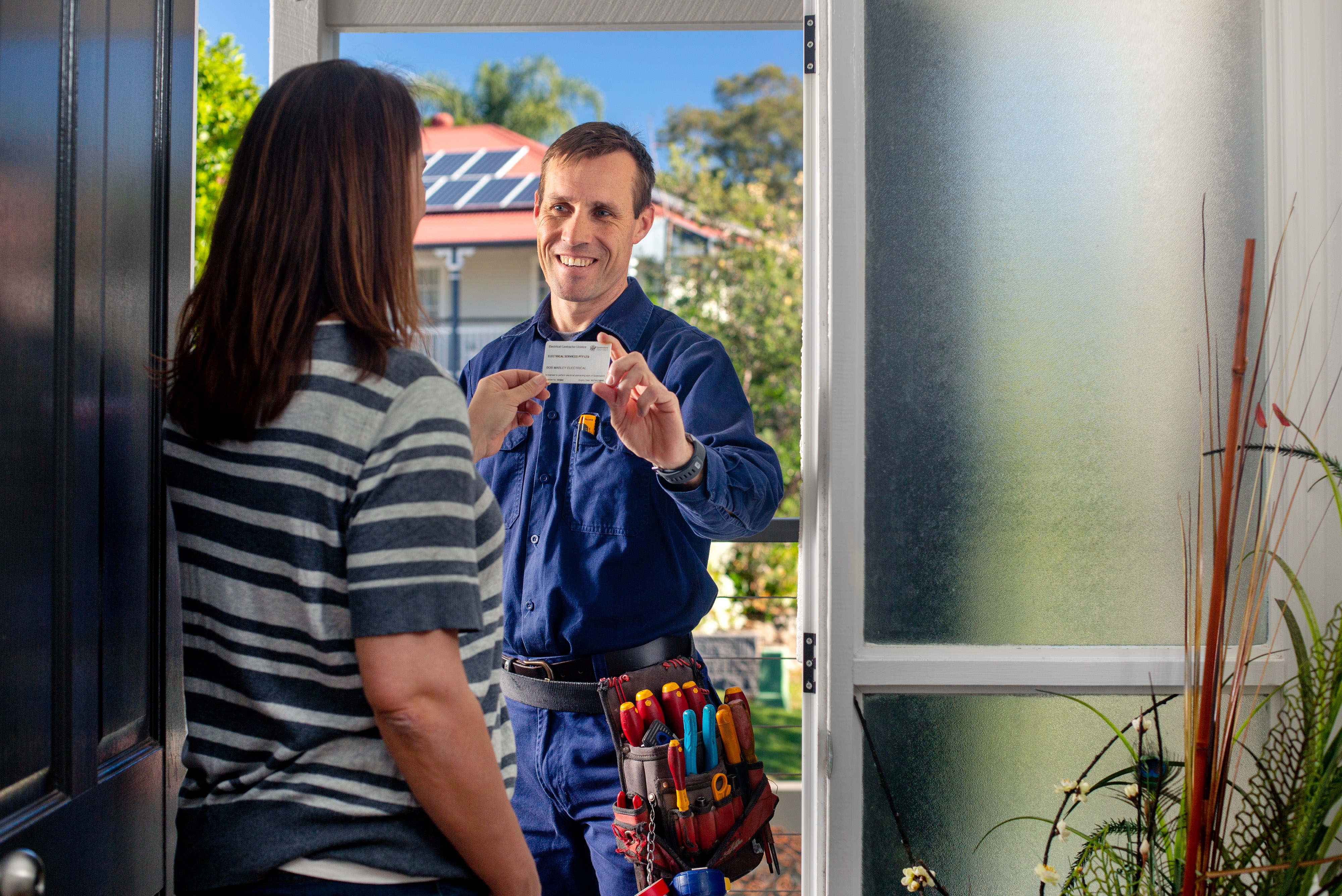Shocks and tingles

If you touch something that gives you an electric shock or a tingle, the next thing you touch should be your phone. Experiencing a shock or tingle isn’t normal. It could mean there’s an electrical wiring issue in or near your home that might lead to a more dangerous situation.
If you feel an electric shock or tingle from an electrical appliance or any metal fittings such as a water tap, immediately contact your electricity distributor (via the relevant number listed below), 24 hours a day, 7 days a week; they will make the situation safe and investigate the cause. Stay well clear of the location and warn others. It's important not to touch your meter box, switchboard, appliances or metal fixtures such as taps until the property has been made safe.
If you or someone receives an electric shock, seek medical advice to ensure there's no injury.
| Energex | South East Queensland – Sunshine Coast to Esk and Gatton areas | 13 19 62 |
| Essential Energy | Goondiwindi and surrounding areas | 13 20 80 |
| Ergon Energy | Rest of Queensland | 13 16 70 |
| Rio Tinto Australia | Weipa | 1800 820 711 |
Shocks, tingles and nuisance trips
Electricity is invisible, so you can’t see the danger… but it can kill.
Have you ever felt a zap, shock or tingle? Well it means something is not safe, so let’s investigate.
A minor electric shock might feel like a zap you get from static electricity or intense pins and needles – but it is the feeling of electric current running through your body. Even if it feels very minor, it’s not safe and you need to do something about it.
No matter the severity, or how infrequently it happens, you need to take this seriously as it’s a sign there could be a serious problem with your electrical equipment, wiring, switchboard or powerlines.
If you feel a shock or tingle from electrical equipment, stop using it immediately and contact your electricity distributor or get a licensed electrician to check it out.
If you feel a shock or tingle from a tap or metal fitting in your house, you need to contact your electrical distributor straight away to check out your property – for most people in Queensland, that would be Energex or Ergon Energy.
Avoid contact with the electrical equipment and any metal fittings. Keep away from the area, but don’t turn off your power as you may get an electric shock from the switchboard. If you think you’ve received an electric shock, seek medical attention. Even if you feel ok, an electric shock can have serious delayed effects.
Nuisance tripping is something else that shouldn’t be ignored.
Nuisance tripping is when your safety switch or circuit breaker regularly trips or flicks off for no apparent reason. This could be caused by circuits being overloaded or by faulty electrical equipment or wiring.
Circuit overloads are often caused by too many pieces of electrical equipment plugged into the same circuit ¬and all turned on at the same time.
To safely check the cause of a circuit tripping:
- Unplug all electrical appliances on that circuit.
- Reset the safety switch for that circuit.
- Then plug your electrical appliance back in, and switch them on one item at a time.
If the safety switch trips again, then the last electrical appliance you plugged in and switched on may be the cause.
Disconnect it from its powerpoint, reset the safety switch for that circuit and check any remaining electrical appliances by plugging them in and switching them on one by one. If everything functions properly, you’ve identified the problem. To prevent the overload you could try plugging the electrical appliance into a different circuit that is safety switch protected.
Now, if your safety switch on this circuit trips when the electrical appliance is plugged in and switched on, then the appliance is most likely faulty. In this case you should replace it, or remove and label it and store it securely until you have it checked by a licensed electrician or the manufacturer. So if you feel a zap, shock or tingle – don’t ignore it - get it checked out. Electricity is invisible, so you can’t see the danger….but it can kill.
Find out more at electricalsafety.qld.gov.au
Watch the Energex and Ergon Energy shocks and tingles advertising campaign

